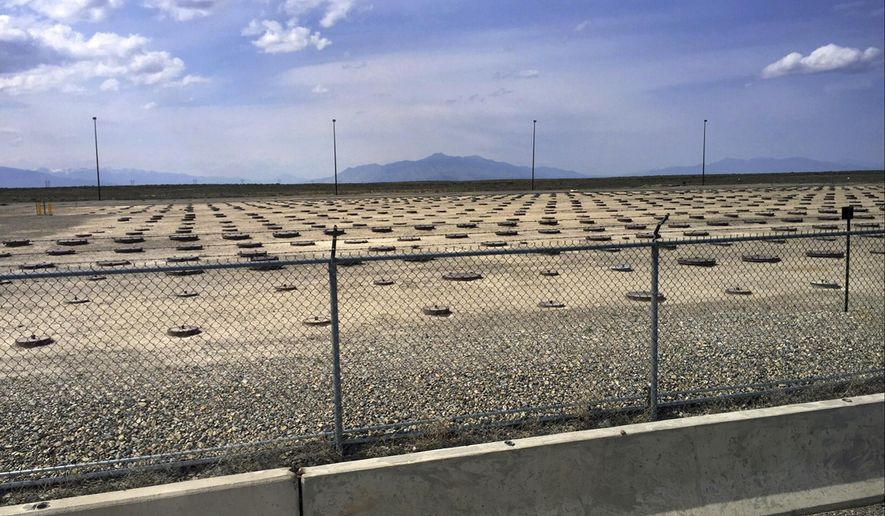BOISE, Idaho (AP) - Ongoing Superfund cleanup work of radioactive and other contamination at the Idaho National Laboratory in eastern Idaho has been successful at protecting humans and the environment, U.S. and state officials say.
The five-year review by the U.S. Department of Energy, U.S. Environmental Protection Agency and the Idaho Department of Environmental Quality also said that potential exposures in areas that aren’t yet cleaned up are being controlled.
The nuclear site started operating in the late 1940s under the Atomic Energy Commission, a forerunner of the Energy Department, as part of a plan to build, test and operate nuclear reactors, fuel processing plants and support facilities. Fifty-two reactors were built over the years.
The 890-square-mile (2,300-square-kilometer) site is located about 50 miles (80 kilometers) west of Idaho Falls. The lab area is in high desert sagebrush steppe and sits atop the Lake Erie-sized Snake River Plain Aquifer, which supplies water to farms and cities in the region. The aquifer started becoming contaminated from the nuclear site in 1952, according to a U.S. Geological Survey report released last year.
The Geological Survey report said contamination levels at all but a handful of nearly 180 wells are below acceptable standards for drinking water as set by the U.S. Environmental Protection Agency. The report cited cleanup efforts at the Energy Department site as helping improve the aquifer.
Contamination at the site reached the aquifer through injection wells, unlined percolation ponds, pits where radioactive material from other states was dumped, and accidental spills. All those happened mainly during the Cold War era before regulations to protect the environment were put in place.
In 1989, the area was added to the National Priorities List for Uncontrolled Hazardous Waste Sites, becoming a Superfund site.
The five-year, statutorily-required report announced this week stems from that designation as well as a 1991 settlement agreement former Democratic Gov. Cecil Andrus reached with the Energy Department and Environmental Protection Agency giving Idaho some monitoring oversight of the federal facility.
Work outlined in the 452-page report mainly focuses on groundwater and efforts to clean up existing contamination. It covers 2015 to 2019, and is the fourth such five-year reports over the last 20 years.
The report focuses on contamination at several key nuclear facilities, including the Advanced Test Reactor, Test Area North, the Idaho Nuclear Technology and Engineering Center and its associated Tank Farm Facility, and a number of landfills containing nuclear waste.
Work at Test Area North involves removing contamination in an underground plume with a pump-and-treat technology. Officials say they will install a new well at the site that will allow microorganisms to break down a solvent put into the ground through an injection well that operated from the mid-1950s to 1972.
At the Tank Farm Facility, the report sites soil and groundwater contamination. In 1972, about 19,000 gallons (71,920 liters) of radioactive sodium bearing waste that involved tritium, strontium-90, cesium-137 and plutonium-238 spilled during a failed underground transfer. The report lists a target year of 2095 to achieve remediation objectives there, with the final plan to install a cap over the area to prevent water from reaching contaminated soil.
At the site’s Radioactive Waste Management Complex, a vapor vacuum extraction and treatment system is in place.
The report notes that many of the sites will require ground-water monitoring indefinitely.
The Idaho National Laboratory is a huge economic driver in the state, with about 4,400 workers. It’s also been tapped to play a key role in revamping the nation’s nuclear power industry by helping develop a new wave of reactors as part of a strategy to reduce U.S. greenhouse gas emissions by generating carbon-free electricity with nuclear power.
Besides nuclear research, the lab is also involved in developing cybersecurity methods and does work in renewable energy alternatives.




Please read our comment policy before commenting.